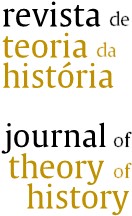AS VANGUARDAS DO SÉCULO XX E O CAMINHAR COMO PRÁTICA ESTÉTICA NO CAMPONÊS DE PARIS
Keywords:
Walking and the city, Public Art and walking, Urban cartography, avant-garde cityAbstract
In the early twentieth century, walking was appropriated by the avant-garde as a form of aesthetic action. The Dadaists used walking to represent the city's banality. Dadaism dealt a mortal blow to traditional concepts of culture, giving rise to the emergence of new expressions and concepts through denial of what had come
before. The exploitation of the banal preached by Dada gave rise to Freudian analysis into the unconscious of the city, which would be developed later by the Surrealists and Situationists. These representations originated in the Futurists'
belief that the city should not be viewed statically. Surrealist ideas were developed in the context of interwar Europe. Using walking as a device, the surrealist city concentrated areas to be exploited every day, differently, where you feel lost and were allowed to have the feeling of the ‘wonderful everyday’ and to explore and recognize the unconscious areas of the city. By exploiting the symbolic, they sought to find au hasard elements that were impossible to find in traditional perspectives. This process is depicted in the Louis Aragon’s The Peasant of Paris, where an analogy was drawn between Surrealist imagery and romantic spirit, a comparison that was possible only in the city. Louis Aragon described the agony of passages, this fascinating urban space, and the walking experience in a public park at night
where literally reality is confused with dreaming. Bretons's Nadja and The Crazy Love also showed this process, but emphasizing perceptions arising au hasard during encounters with people and objects in urban wanderings. Successions of facts, objects and situations were clues that led Breton to recognize, little by little, signs that led to his personal destiny, always with the city as a backdrop.
References
ARAGON, Louis. O Camponês de Paris. Rio de Janeiro: Imago, 1996.
CARERI, Francesco. Walkscapes: walking as an aesthetic practice. Barcelona: Gustavo Gili, SA, Barcelona, 2002.
CIDADE, Daniela. A cidade revelada: a fotografia como prática de assimilação da arquitetura. Dissertação de Mestrado: PROPAR –UFRGS, 2002, p. 95 e 105.
CHEVALIER, Jean. Dicionário dos símbolos. Rio de Janeiro: José Olympio, 1995.
DE QUINCEY, Thomas. Confissões de um comedor de ópio. Porto Alegre, LP&M, 2002.
PAESE, Celma. Caminhando: o caminhar como prática socioestética e estudos sobre a arquitetura móvel. Santa Cruz do Sul: EDUNISC, 2015.
Downloads
Published
How to Cite
Issue
Section
License
The journal publishes only and exclusively original manuscripts. All rights reserved.
Licensed under a Creative Commons Attribution-NonCommercial-NoDerivatives 4.0 International License



